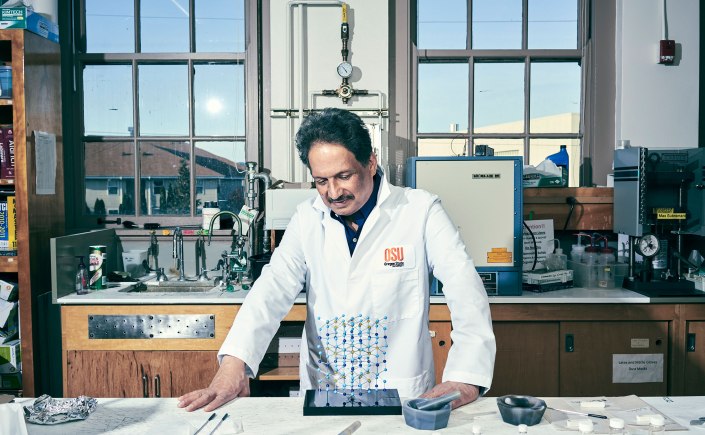This is an interesting piece in Bloomberg on Mas Subramanian, “the biggest celebrity in the uncelebrated world of pigment research,” and his quest to find a safe and stable red pigment:
The world lacks a great all-around red. Always has. We’ve made do with alternatives that could be toxic or plain gross. The gladiators smeared their faces with mercury-based vermilion. Titian painted with an arsenic-based mineral called realgar. The British army’s red coats were infused with crushed cochineal beetles. For decades, red Lego bricks contained cadmium, a carcinogen.
More than 200 natural and synthetic red pigments exist today, but each has issues with safety, stability, chromaticity, and/or opacity. Red 254, aka Ferrari red, for example, is safe and popular, but it’s also carbon-based, leaving it susceptible to fading in the rain or the heat. “If we sit out in the sun, it’s not good for us,” says Narayan Khandekar, director of Harvard’s Straus Center for Conservation & Technical Studies and curator of the Forbes Pigment Collection. “That’s the same for most organic systems.” One red is stable, nontoxic, and everlasting: iron oxide, or red ocher, the ruddy clay found in Paleolithic cave paintings. “It’s just not bright in the way that people want,” Khandekar says.
Among Subramanian’s 50+ patents is this one:
Patent No. 8,282,728 is for something potentially far more valuable than YInMn itself. In fact, it only briefly mentions “intense blue color.” Subramanian’s true invention was the crystal structure—or the atomic arrangement—of the material, called trigonal bipyramidal coordination. The manganese imparts the blueness, and by adjusting its proportion in the compound, you can lighten or darken its tint. But, as Subramanian’s jars of lilac and mossy green demonstrate, the structure is also capable of absorbing (and, conversely, reflecting) other colors. This discovery was like finding a hidden door in a bookshelf.
Below is a video of how the famous YInMn (pronounced “yin-min”), the bright blue pigment, was accidentally created in Subramanian’s lab (starts at about 3:35 in the video):
Another fact of the day: titanium dioxide accounts for almost two-thirds of the pigments produced globally; valued at about $13.2 billion, it’s responsible for the crisp whiteness of traffic lines, toothpaste, and powdered doughnuts.
